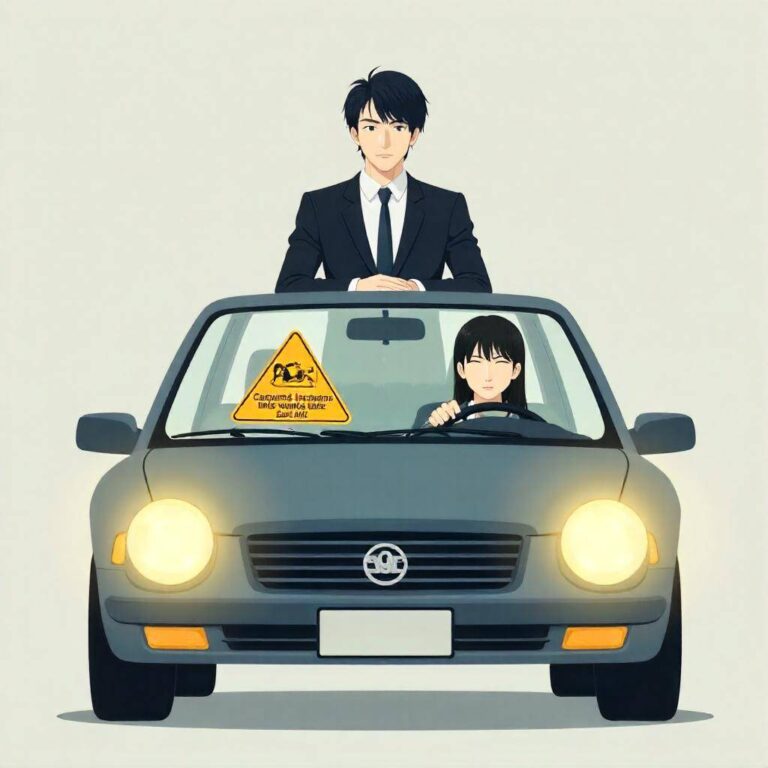Question from a reader:
If I collide with a car that is driving in the wrong direction, I understand that the other party is at fault. However, if a car that ignored a stop sign swerved and crossed the center line, what would the fault percentage be in the case of a head-on collision? Could you explain what typically happens in
such situations?
Consideration of Fault Percentage in Collisions with Wrong-Way Vehicles
Organizing the Accident Situation
Recently, a friend asked me this question. While I understand that the other party is at fault when colliding with a car driving in the wrong direction, they wondered how the fault percentage would be determined if a car that ignored a stop sign swerved and crossed the center line. Such a situation can be very complicated when it actually occurs. The fault percentage in traffic accidents can vary greatly depending on the circumstances of the accident and the actions of each driver. Let’s consider a more specific example. Based on the scenario my friend thought of, I will analyze it from a legal perspective as well.
Clarifying the Scenario
For example, imagine an incident at an intersection with a stop sign. Driver A ignores the stop sign and enters the intersection. Meanwhile, Driver B crosses the center line to yield to a car driving in the wrong direction. As a result, Driver A and Driver B collide. The key points here are that Driver A ignored the stop sign and that Driver B crossed the center line. Both of these actions would likely be considered negligent.
Factors Determining Fault Percentage
So, what would the fault percentage be? Generally, the first step is to consider how much each driver’s actions contributed to the accident. Driver A has a high degree of fault for ignoring the stop sign. On the other hand, Driver B also has fault for crossing the center line. When calculating the specific fault percentage, the concept of “comparative negligence,” which is used in Japanese traffic accident cases, is applied. The fault percentage here is determined based on the illegality of both drivers’ actions and the circumstances of the accident. Typically, the driver of the wrong-way vehicle is considered to have a high degree of fault, but Driver A’s disregard for the stop sign cannot be overlooked. In general cases, Driver A might be assigned a fault percentage of 70%, while Driver B could be assigned 30%.
Learning from Case Law on Fault Percentage
The determination of fault percentage also relies on actual court precedents. For example, in one case, the driver who ignored the stop sign was assigned 70% fault, while the wrong-way driver was assigned 30%. Thus, past accident cases are often referenced. However, since specific accidents can differ, this should be viewed as just one reference point. Various factors such as the situation at the accident scene, witness testimonies, and traffic conditions can all influence the outcome.
Seeking Expert Opinions
In response to my friend’s question, I said, “It’s a complex case.” When there is fault on the part of the parties involved, it is important to consult with insurance companies or legal advisory services. Objectively reassessing one’s own degree of fault is crucial for future procedures. Additionally, consulting a lawyer who specializes in traffic accident law can help clarify your position. Legal experts can propose specific solutions based on past precedents and their experience.
What You Can Do for Self-Defense
Now, there are many things drivers can do to prevent accidents. For example, obeying stop signs, carefully checking the surrounding situation, and following traffic rules are all important. This contributes to self-defense as well. It is not uncommon to feel anxious while driving, but it is essential to drive calmly and without haste. Particularly, being aware that there may be wrong-way vehicles around can help prevent accidents.
Conclusion
The fault percentage in collisions with wrong-way vehicles can vary significantly based on driver actions. Accurately understanding fault requires considering the detailed circumstances of the accident, past precedents, and the opinions of legal experts. To prevent accidents, it is essential to consistently follow traffic rules and pay attention to the surrounding situation. Traffic accidents are a common issue that can happen to anyone. Therefore, having accurate knowledge about the law and fault percentages is crucial for protecting oneself. Moving forward, I want to continue adhering to the rules and prioritize safe driving.


